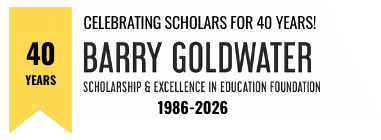Catherine R. Mulzer (née DeBlase) | Senior Research Scientist, DuPont
I will never forget the excitement of attending the annual Marist College President’s Dinner at the Culinary Institute of America in Spring 2009. My family was invited because I was the second of two siblings to be named a Goldwater Scholar; my brother, Andrew, had been named a Scholar in 2008. At this event, I had the opportunity to speak with many of the school’s patrons, telling about my first experience in proposal writing, which had won this honor for me. At the time, melamine in baby formula from China was causing a problem and I wrote about a method for early detection of this organic compound. What I did not realize at the time was how profound the influence of winning the Goldwater scholarship was for me beyond financial assistance. It was my first exposure to how to think about, formulate, and communicate a research proposal, a skill that I now rely on daily. It was also the first boost of confidence in my ability as a chemical researcher.
Ultimately, the Goldwater application process paved my path and led me to my current career as a Senior Research Investigator in the Electronics and Imaging business at DuPont in Marlborough, MA. The assistance I received from my mentor, my organic chemistry professor Jocelyn Nadeau, and the entire Marist College chemistry department laid the foundation for my application to the National Science Foundation Graduate Research Fellowship in my senior year. My proposal focused on studying the geometrical requirements for singlet fission using Covalent Organic Frameworks (COFs) and was awarded funding for four years of my doctoral studies at Cornell University.
In Summer 2011, I started work on my Ph. D. at Cornell in the Dichtel Research Group where I brought COFs into a new application space, electrochemical energy storage. COFs are two- or three-dimensional crystalline polymers with inherently high surface areas. We sought to use the high surface area of COFs to increase the electrochemical double layer capacitance of capacitors. Simultaneously, we used the principles of organic polymer chemistry to reliably incorporate redox-active functionality into the COF backbone. This redox-activity further increased the capacitance in a process known as pseudocapacitance. During my time in graduate school we published our work in 12 peer reviewed journal articles including one review and a perspective on other scientists’ work in the field. During my time in graduate school, my work was recognized both internally and nationally, including an award granted to me from the DSM corporation awarded at the 2017 Fall National American Chemical Society meeting.
After graduate school I began my career in industry at Dow electronic materials (currently DuPont Electronics and Imaging). My polymer background helped me to understand how to enhance adhesion of electroless copper to smooth surfaces. Electroless metallization is required to render insulating surfaces conductive before electrolytic bulk copper can be deposited. Next generation electronics demand faster speeds and require smooth substrate surfaces. However, adhesion of copper to the underlying substrate is challenging when mechanical interlocking is removed. I looked to incorporate chemical adhesion that can compete with adhesion offered from mechanical methods. In 2017 I joined the Emerging Technologies group where I focus on fundamental research to enable the next generation of electronics including sensor technology.
In 2018 my chemistry career achievements and impacts were highlighted by C&E News (national magazine for chemists and chemical engineers) when I was named one of the “Talented 12.” This award honors scientists under 40 who have made a large impact in their field. Now, I am preparing a TED talk to be presented at a TED event scheduled in Philadelphia next September. I have been fortunate to continue the excitement that accompanies learning from science. This all began with my application to be a Goldwater scholar.
Photocredit: DuPont 2019

